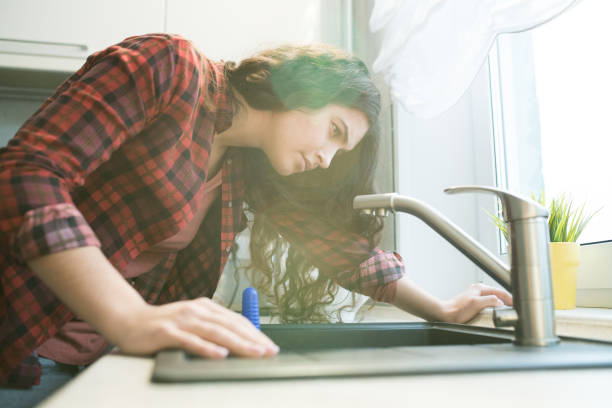Why It's Important to Repair a Malfunctioning Faucet
Why It's Important to Repair a Malfunctioning Faucet
Blog Article
We've stumbled on this great article involving How to Fix a Dripping or Leaky Faucet directly below on the web and believe it made sense to talk about it with you on this site.

Dripping faucets may look like a minor hassle, yet their impact exceeds simply the aggravation of the noise. From drainage to incurring unneeded economic expenses and wellness risks, disregarding a dripping faucet can lead to numerous consequences. In this post, we'll explore why it's important to address this usual home problem quickly and effectively.
Wastefulness of Water
Environmental Effect
Trickling faucets add considerably to water wastefulness. According to the Environmental Protection Agency (EPA), a solitary faucet trickling at one drip per second can squander greater than 3,000 gallons of water per year. This not just pressures water resources however likewise influences communities and wild animals based on them.
Financial Prices
Enhanced Water Costs
Past the environmental effect, trickling faucets can inflate water bills considerably. The accumulated waste gradually converts into higher utility costs, which could have been avoided with timely repairs.
Possible Residential Property Damage
Furthermore, long term leaking can lead to harm to components and surface areas bordering the faucet. Water accumulation can cause staining, corrosion, and even structural concerns if left ignored, leading to additional fixing expenses.
Health Problems
Mold And Mildew and Mold Development
The consistent existence of dampness from a trickling tap creates an ideal environment for mold and mildew and mold development. These fungi not only endanger indoor air top quality however additionally pose health and wellness dangers, specifically for people with respiratory problems or allergic reactions.
Waterborne Illness
Stagnant water in dripping taps can come to be a breeding ground for bacteria and other pathogens, increasing the danger of waterborne diseases. Pollutants such as Legionella microorganisms prosper in stationary water, possibly resulting in significant diseases when consumed or inhaled.
Do it yourself vs. Professional Repair
Advantages and disadvantages of DIY Repair Work
While some might attempt to fix a dripping faucet themselves, DIY repairs come with their very own set of difficulties. Without correct expertise and tools, do it yourself attempts can exacerbate the concern or cause incomplete repairs, lengthening the problem.
Benefits of Working With a Specialist Plumber
Hiring a specialist plumber ensures that the underlying cause of the trickling faucet is dealt with efficiently. Plumbings possess the expertise and devices to identify and repair faucet problems effectively, saving time and minimizing the danger of more damage.
Step-by-Step Overview to Fixing a Dripping Faucet
Devices Required
Prior to trying to repair a trickling faucet, gather the needed devices, including a flexible wrench, screwdrivers, replacement parts (such as washing machines or cartridges), and plumber's tape.
Common Faucet Issues and Their Solutions
Determine the sort of tap and the particular problem creating the drip. Common issues consist of damaged washers, rusty valve seats, or faulty O-rings. Refer to maker guidelines or online tutorials for step-by-step advice on repair work.
Safety nets
Regular Upkeep Tips
To prevent leaking faucets, carry out routine upkeep such as cleansing aerators, checking for leaks, and changing damaged components without delay. In addition, think about mounting water-saving gadgets or upgrading to extra efficient fixtures.
Importance of Prompt Fixes
Attending to trickling taps as soon as they're seen avoids more water wastefulness and prospective damage, ultimately conserving both water and money in the long run.
Influence On Home Value
Understanding of Well-Maintained Home
Preserving a home in good condition, including dealing with maintenance concerns like trickling faucets, improves its perceived worth and worth amongst potential buyers or lessees.
Influence on Resale Worth
Features with properly maintained plumbing fixtures, including taps, command greater resale values in the property market. Attending to leaking taps can add to a positive perception during building examinations and settlements.
Environmental Obligation
Individual Payment to Conservation
Taking duty for taking care of trickling taps straightens with wider efforts towards water preservation and ecological sustainability. Every individual's actions jointly make a significant effect on protecting precious sources.
Sustainable Living Practices
By focusing on prompt repair services and embracing water-saving habits, people add to sustainable living techniques that benefit both present and future generations.
Verdict
Dealing with a trickling faucet exceeds mere benefit; it's an essential step towards conserving water, minimizing financial costs, and protecting wellness and home. Whether via DIY repair services or specialist support, acting to deal with dripping faucets is a tiny yet impactful way to promote accountable stewardship of resources and add to a much healthier, extra sustainable future.
How to Fix a Leaky Faucet: Step-by-Step Repair Guide
A leaky faucet may seem like a simple annoyance, but if it's not fixed promptly, that leak could cost hundreds to potentially thousands. From water damage to mold, mildew, and high water bills, even a tiny leak can be catastrophic if left unattended. Damage like this can even affect the overall value of your home, so it's important to take the right approach for leaky faucet repair. You may need the help of a plumber in some cases, but we've got a few tips you can try on how to fix a leaky faucet before calling the pros.
Four Faucet Types
When you're learning how to fix a leaky faucet, the first step is knowing what kind of faucet you're working with! There are four common types.
Cartridge Faucets
Cartridge faucets come in one- or two-handled varieties. In one-handled cartridge faucets, hot and cold water combines in a single cartridge. In the two-handled versions, hot and cold water are controlled separately and mixed in the faucet.
Ball Faucets
Ball faucets have a single lever you push up and down to adjust the pressure and rotate to change the temperature. A slotted metal ball controls the amount of water allowed into the spout.
Compression Washer Faucets
They're the oldest type of faucet, but they're still used in many homes — especially older ones. Compression faucets have two separate handles that, when turned, raise or lower the washer that seals a water valve. This valve stops water from flowing through the faucet when it is turned off.
Disc Faucets
Disc faucets rarely need to be repaired due to their maintenance-free design. The water flow is controlled by two discs — the upper one raises and lowers against a fixed lower disc, creating a watertight seal. If your disc faucet starts leaking, you may need to replace the seals or clean residue buildup from the inlets.
Fixing a Leaky Faucet
Step 1: Turn Off the Water
Whether you're learning how to fix a leaky bathtub faucet or how to fix a leaky kitchen faucet, always turn off the water supply to your working area when you're fixing a leak. The last thing you want is a flood added to your list of things to fix.
Look for the shutoff valves below your sink or around the tub and turn them clockwise to stop the water flow. If your faucet doesn't have shutoff valves, you may need to turn off the water for the whole house. Check to make sure it's off by turning the faucet on. If nothing comes out, you're ready to start the repair.
Step 2: Take Apart the Faucet
How you disassemble your faucet depends on the type of fixture you have. You can use a flathead screwdriver to remove the caps on top of the handle or handles for cartridge and compression faucets. Inside, you should see handle screws. Unscrew these with a screwdriver to remove the handle.
Disc- and ball-style faucets will typically have an inlet screw near the handle, and removing that will reveal the interior of the faucet.
Detach the Valve Stem
For cartridge- and compression-style faucets, you'll see the inner valve stem or cartridge once you remove the faucet handles. If you have a compression faucet, unscrew the brass valve stem. If you have a cartridge faucet, pull out the cartridge. If your cartridge has been in place for a while, it may require some tools or extra force to remove it due to mineral deposits.
Examine and Replace Parts
Once you've removed the parts, check them out to confirm what needs to be replaced. You may see corroded rubber washers, O-rings, stems, or cartridges. On a ball-style faucet, check the seats and springs for damage.
If you need to repair a leaky disc faucet, check the inlet and seals on the lower disc.
Once you determine what parts must be replaced, visit your local hardware store. Bring the damaged parts with you to ensure you can purchase the correct components to replace them.
Clean Valves and Faucet Cavity
If you've removed a stem or cartridge, you may notice mineral buildup in the faucet's threads. Use white vinegar to clean the valve seat by soaking it for a few minutes, then scrub it away with a soft toothbrush and rinse with warm water. You can also clean the interior of the faucet in the same way.
Reassemble the Faucet
Once your faucet is cleaned and the required parts have been replaced, it's time to reassemble it. Put the pieces back together and slowly turn the water supply back on. Doing this slowly is crucial because too much initial water pressure can damage the new hardware you've just installed.
https://homewarranty.firstam.com/blog/how-to-fix-leaky-faucet

I am just very eager about How to Fix a Dripping or Leaky Faucet and I am praying you liked the new entry. Liked our post? Please share it. Help somebody else locate it. Thanks for going through it.
Report this page